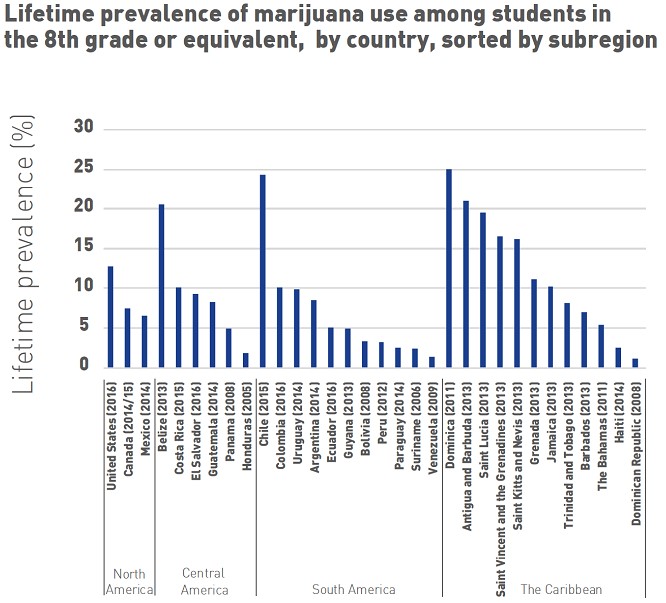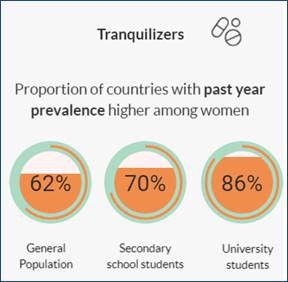- English
- Español
Media Center
Press Release
OAS Releases Report on Drug Use in the Americas 2019
March 20, 2019The Organization of American States (OAS) published today its Report on Drug Use in the Americas 2019 that analyzes drug use data in the Western Hemisphere and features information on the trends, challenges, and emerging issues of interest for policy-makers and the general public.
The Report, prepared by the Inter-American Drug Abuse Control Commission (CICAD), the OAS’ consultative and advisory body on the drug problem, contains statistics on drug use (including alcohol and tobacco) in 33 Western Hemisphere countries and presents a series of findings and recommendations on:
- Early onset of drug use
- Drug use trends
- Changes in drug use by sex
- New challenges for drug policy
The document was presented during the 62nd session of the United Nations Commission on Narcotic Drugs in Vienna, Austria, and concludes that, “to reduce the consequences of the drug problem, especially in our most vulnerable populations, countries must adopt policies that take into account the gender perspective and that are based on a public health approach focused on the well-being of the individual and a clear respect for human rights.”
Ambassador Adam Namm, CICAD Executive Secretary, highlighted that, “the Report represents robust collaboration with OAS member states on data collection methodology, and careful analysis by CICAD experts. This document provides a snapshot of key indicators of drug consumption across the Americas, as well as unique, valuable information on trends that will assist in the design and implementation of more effective drug policies.”
The report, which builds upon previous versions published in 2011 and 2015, includes some key findings and recommendations, including:
Early onset of drug use:
- Drug use is appearing at young ages, in many countries as young as the eighth grade.
- The younger people begin using drugs, the greater the health risks and other consequences.

Drug use trends:
- Cannabis use among secondary school students is increasing in most countries that have trend data.
- Cannabis use is increasing in most countries that have trend data, and about half the countries show increases in cocaine use, in the general population.
- Tobacco appears to be the only substance that is showing systematic decreases in use over time, in the general population.

Changes in use by sex:
- Drug use has historically been seen as a male phenomenon, but recent data show that females in some countries are now using certain drugs either at the same, or at higher rates, than males.
- Misuse of tranquilizer pharmaceuticals is higher among females in every population in nearly every country.
- Non-medical use of prescription drugs, synthetic drugs, and opioids demonstrates how drug use patterns are changing.

New challenges for drug policy:
- The prevalence of new psychoactive substances (NPS), opioids, and benzodiazepines presents new challenges not only for drug treatment but for public health and drug policies overall.
- The United States and Canada are experiencing serious epidemics of opioids and NPS, resulting in some of the highest overdose rates in the history of drug use.
- High-risk behaviors associated with alcohol, such as early initiation of use and binge drinking, are a concern across the region. In ten countries, past month prevalence among eighth grade students exceeded 20% and, in three of these, exceeded 30%.
- Changes in the legal and regulatory status of marijuana have continued unabated throughout the Hemisphere and the decriminalization of marijuana for recreational or medicinal purposes has led to increased access for adults.

Reference: E-014/19


